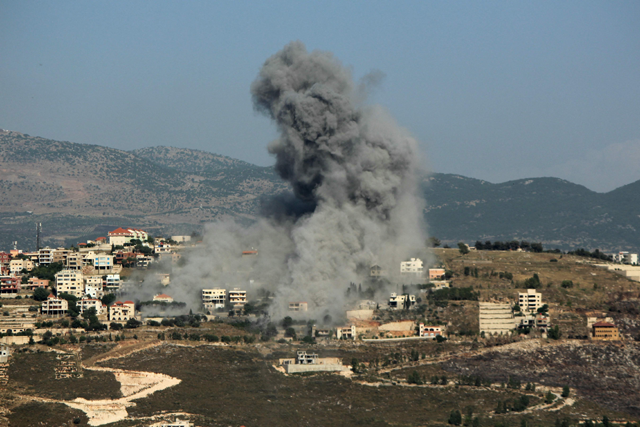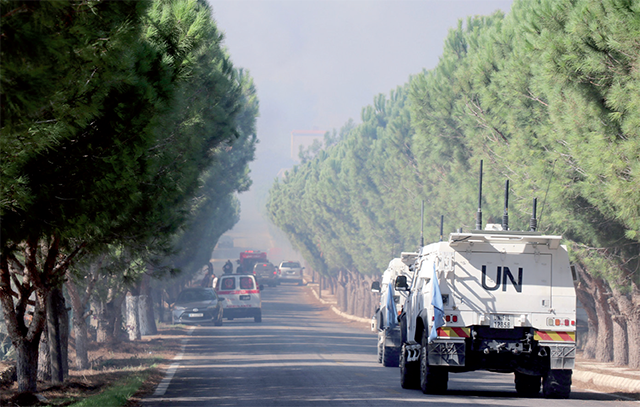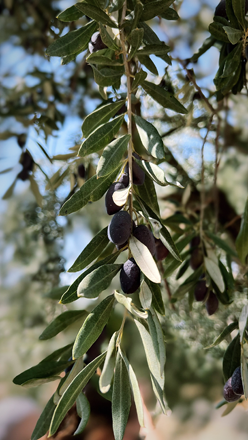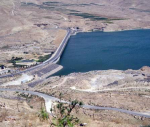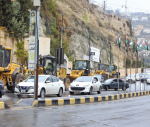You are here
Due to 'loopholes' in international law, legality of using white phosphorus remains 'guesswork'
By Sophie Constantin - Oct 09,2024 - Last updated at Oct 09,2024

Smoke from Israeli incendiary munitions is pictured over the Gaza City seaport (AFP photo)
AMMAN — Residents of central Beirut have recently reported choking smoke and mysterious white particles falling from the sky after an Israeli strike, raising concerns that the controversial use of white phosphorus –a weapon widely criticised for its severe and indiscriminate impact– may have been involved once again.
This marks a worrying resurgence of white phosphorus use, a substance that has faced international condemnation since Israel’s deployment in Gaza during 2008-2009, when Human Rights Watch deemed it a violation of international law. Though human rights group has highlighted Israel’s “pledge” to cease using such weapons in populated areas and to develop alternative shells, recent reports indicate renewed use of white phosphorus in both Lebanon and Gaza, igniting urgent debates over its legality and the need for stronger regulations.
Data from the Armed Conflict Location & Event Data Project (ACLED) reveals that Israel has deployed white phosphorus over 60 times along Lebanon’s border in the past two months, further intensifying concerns amid the ongoing conflict and raising serious questions about the balance between military necessity and humanitarian law.
Incendiary weapon of destruction
White phosphorus, a highly reactive chemical, ignites when exposed to oxygen, producing intense heat, light, and thick smoke. Temperatures from the chemical reaction can reach up to 815 degree Celsius, with the potential of settingbuildings, crops, and other civilian property on fire. The chemical’s effects are brutal, causing severe burns and lifelong suffering.
“The most severe effects include second and third degree burns, which can lead to deep tissue damage and necrosis,” Tharwat Zahran, a medical toxicologist, was quoted as saying in a HRW report. “Inhalation of the smoke can cause severe respiratory damages, shortness of breath, and coughing.”
As this chemical can burn down to the bone, even small burns are often fatal. In some cases, white phosphorus can enter the bloodstream and cause organ failure, HRW said.
Accusations and Documentation
Human rights groups like Amnesty International and HRW have intensified investigations, building a growing body of evidence. Both organisations confirmed the use of white phosphorus in civilian areas of Gaza and southern Lebanon in the weeks that followed the October 7 escalation.
In Gaza alone, the European-Mediterranean Human Rights Monitor reported that on November 15, Israel launched approximately 300 white phosphorus shells into a densely packed residential areaof northern Gaza within 40 minutes. Similar strikes were reported in Gaza City, Jabalia, Sheikh Radwan, and the Shati refugee camp, prompting accusations of “forced displacement” and “ethnic cleansing.”
In Lebanon, HWR’s June 2024 report verified footage of white phosphorus munitions hitting residential buildings in 17 municipalities across South Lebanon. Amnesty confirmed its use in Dheira, Mari, and Aita Chaab in October 2023, labelling the attack on Dheira as a “war crime” and calling for anextensive investigation. Lebanese officials reported that “people had to be rushed to the hospital, asphyxiating from inhaling white phosphorus smoke,” and that at least 173 civilians had been injured due to exposure of white phosphorus.
Amnesty documented pictures showing Israeli soldiers handling US-labelled white phosphorus shells near the Gaza border, and video evidence of these shells exploding in mid-air, leaving a distinct thick white smoke of phosphorus falling over civilian areas.
The Washington Post has confirmed US-made 155 mm artillery rounds had been used in Dheira, identifying markings from shells made in Louisiana and Arkansas in 1989 and 1992. The green colour and “WP” markings confirm the rounds are white phosphorus, according to the report.
Amnesty further verified photos taken by AFP on 18 October near the Lebanese border, showing 155 mm white phosphorus shells lined up for use by Israeli forces. Visible markings, M825A1 and D528, indicate the shell’s nomenclature and serve as the US Department of Defence Identification Code for white phosphorus-based munitions.
Loopholes in International Law
White phosphorus is not prohibited but is heavily restricted under international humanitarian law. Protocol III of the Convention on Conventional Weapons (CCW), endorsed by the UN General Assembly in 1980, is the only legally binding instrument dedicated to incendiary weapons, forbidding their use in civilian areas. However, Israel is not a signatory to Protocol III, and the regulation itself has loopholes, according to HRW reports.
For example, the protocol only applies to weapons “primarily designed” to cause fires, excluding the multipurpose munitions like white phosphorus when used for smoke screens, even though they cause similar injuries. Additionally, the regulations for ground-launched incendiary weapons, like those used in Lebanon, are less strict compared to air-dropped ones, even though both cause the same injuries.
Also, the term “concentration of civilian” is loosely defined, covering anything from small village to large cities. Human rights group argue that these loopholes need to be closed to better protect civilians.
Military use of white phosphorus
White phosphorus is primarily used for military purposes, such as generating smoke screens or signalling, and it becomes illegal when used against civilians. The Israeli army maintains that it employs white phosphorus only for smoke creation, adhering to international legal requirements.
However, the Washington Post questioned Israel’suse of white phosphorus in Southern Lebanon on the evening of October 16. Their investigation noted that deploying smoke at night seemed tactically unnecessary since there were no Israeli troops on the Lebanese side of the border to mask with smoke screens, raising concerns about the real intent behind the deployment of the chemical.
Providers of white phosphorus
HRW and Amnesty International have verified the US origin of these weapons in recent strikes, raising concerns about the lack of monitoring from the Biden administration. Humanitarian law experts argue that the US. is obligated to track the actions of its allies receiving military aid to ensure compliance with US laws, HWR said.
Israeli response
Israel has consistently denied accusations of using white phosphorus in its operations. Israeli media has quoted army spokesperson Peter Lerner as denying the use of white phosphorous. “Categorically, no” when asked about the deployment of the chemical, insisting that the military “only uses legal weaponry.”
“Similar to many Western armies, the Israeli army also has smoke shells that contain white phosphorus, which are legal according to international law as these shells are intended for smoke screens, and not for an attack or ignition, and they are not legally defined as incendiary weapons,” the spokesperson said, adding that “white phosphorus shells are not used in urban areas, except in certain exceptional cases.”
Reports on Israeli press said that Israel’s 2013 decision to develop new smoke shells did not involve a total cessation of white phosphorus use but rather a limitation.
Call for stronger laws
In November 2023, the European-Mediterranean Human Rights Monitor stated that targeting civilians could amount to crimes against humanity and called for the establishment of an independent international investigation into “Israel’s use of prohibited weapons in Gaza and southern Lebanon”, urging accountability for those who ordered and executed the attacks.

Related Articles
BEIRUT — Israeli strikes on Saturday killed two people and sparked wildfires in southern Lebanon, state media said, with Iran-backed armed g
BEIRUT — Soldiers and volunteers on Thursday were battling a blaze on Lebanon's southern border caused by Israeli bombing overnight, local o
AMMAN — Since October 7, the escalating cross-border violence in southern Lebanon has devastated the lives of tens of thousands of families,


